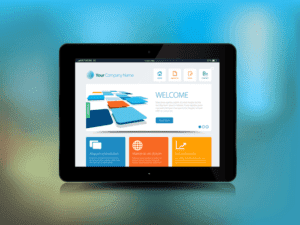You can receive these payments directly in your multi-currency Wallet, and use the same funds later to pay global suppliers. To track accounts payable and receivable, hold on to every receipt, invoice and order. If even one invoice slips through the cracks, your financial records will be off balance. If a vendor offers an early payment discount, your business can save money by paying early, while the vendor benefits by receiving the payment ahead of time and having additional access to cash flow. While a minor discount may not seem like a big deal, it can significantly improve the profits of your company.
How predictive modeling can help accounting firms
Additionally, it will show your customers that you operate your business in a professional manner. AP also requires negotiating payment terms, handling complex data like purchase orders and receipts, and managing various payment methods, all of which add to its administrative burden. Learn more about the future of finance and how Paystand can help your business stay ahead. This resource offers in-depth insights and strategies for optimizing your financial processes and achieving long-term success. Implementing Paystand’s solutions can transform your AR processes, making them more efficient and effective. Businesses can focus on growth and customer satisfaction by reducing manual tasks and improving payment collection.
Proper Accounts Payable management also indirectly promotes AR management by Drip Capital. When a company improves its cash flows, it can channel more resources towards sales and marketing, hence a possibility of improved sales and, subsequently, improved AR. Contrary to the conventional practices where the business acquirer waits for 30 to 60 days to make payment, they get the stock immediately and pay to Drip later.
- Accounts payable automation and accounts payable outsourcing can both help your business manage AP processes more efficiently, but they work in different ways.
- Airbase solves the challenges of AP with a comprehensive, streamlined approach from start to finish.
- Proper management of AR and AP ensures that a company can maintain a positive cash flow, make timely payments to suppliers, and collect payments from customers efficiently.
- They ensure that your business meets accounting standards and tax requirements, reducing the risk of penalties or audits.
- To begin with, it integrates with over 1,000 third-party apps, with payment processors such as Square, Stripe, and PayPal, as well as CRM platforms including HubSpot, Capsule, and Insightly.
- Similarly, crediting the sales account by $250,000 means an increase in sales by the same amount.
Tax & accounting community
Start by implementing clear systems, leveraging automation, and reviewing reports regularly to achieve financial stability and drive growth. Understanding AP and AR will empower your business to make smarter financial decisions and secure long-term success. When managing accounts receivable (AR), it’s common for some clients to pay late or not at all. To prepare for these potential losses, businesses create an “allowance for uncollectible accounts”. This allowance acts as a buffer for estimated bad debts, ensuring that the AR balance on financial statements is more accurate.
Post this entry to the general ledger, and regularly monitor the AR ledger to track outstanding invoices. Reconcile the AR balance with the AR aging report periodically to ensure accuracy. A significant challenge in AP is the lack of visibility into distributed spend, or the spending that occurs across different parts of the organization. With decentralized spending, departments or teams may make purchases without fully communicating or coordinating with the AP department, creating gaps in visibility. This can lead to duplicate payments, missed discounts, late fees, or errors in payment amounts, all of which require manual reconciliation to resolve. So, after the invoice is approved, the company pays the supplier before the due date so that any penalty for late payment does not accrue.
When a customer pays for your service in installments, the amount owed will be listed as an account receivable until it is fully paid. When a business sells on credit, it records accounts receivable instead of immediate cash. This allows customers to buy now and pay later, which is an essential practice in B2B transactions. Without proper AR management, businesses risk cash flow shortages and delayed collections. Accounts Payable and Accounts Receivable are critical to your business’s financial health. Effective management of these processes ensures balanced cash flow, strong vendor and customer relationships, and enhanced creditworthiness.
- Understanding these two concepts is imperative for businesses that wish to gain insights into their accounting process.
- Outsourcing accounts payable can help your business realize savings and free up valuable time for your finance team to focus on substantive work, but it can also present challenges.
- This ensures that the accounts receivable ledger stays current and that cash flow is properly tracked.
- Accounts receivable (AR) represents the money owed to your business for goods or services already delivered but not yet paid for.
- It’s also helpful to allow customers to pay in their preferred currency to remove any friction.
What are Accounts Payable and Accounts Receivable?
This integrated perspective supports long-term financial stability and helps businesses stay prepared for future growth opportunities. Monitoring helps ensure that your accounts payable doesn’t create cash shortages and that your accounts receivable is bringing in money promptly. A proactive approach allows businesses to make informed financial decisions and stay ahead of potential issues. After providing customers with products and/or services, businesses usually issue bills based on mutually agreeable payment terms. The AR team is responsible for invoicing the customers and recording the invoiced amount as accounts receivable and payment terms.
If you’re looking for an all-in-one solution to enhance your practice management, schedule a demo of Basil now and discover how it can simplify your operations. Delve into the complexities of the evolving tax landscape and political shifts impacting your firm. Understanding the implications of these shifts is crucial for every tax professional as we navigate through these transformative times. The second notation, usually used after the discount notation, means the net amount must be paid within 30 days or how many days you decide. This is because it offers a much more robust feature set, a massive library of third-party integrations, and some particularly excellent expense and billing tools. In the table below, you’ll find a quick at-a-glance overview of how Xero and FreshBooks compare to several other accounting platforms.
How to Avoid Burnout by Building Financial and Operational Efficiency
On the balance sheet, you record accounts receivables as current assets and accounts payables as current liabilities. A company’s ability to collect receivables and settle payables directly impacts critical KPIs. Just like accounts receivables, it is important for businesses to effectively manage their accounts payables.
Accrual accounting and cash flow statements can help businesses track their accounts payable and accounts receivable balances and make informed financial decisions. Efficient management of accounts payable and accounts receivable is critical to maintaining a healthy cash flow and ensuring the long-term financial health of a business. Below are some best practices to streamline these processes and minimize financial risks.
Mixing the two up can result in a lack of balance in your accounting equation, which carries over into your basic financial statements. Accounts payable are short-term debts your company owes to vendors and suppliers. Some examples include expenses for products, travel expenses, raw materials and transportation.
Therefore, debiting accounts receivable $250,000 means an increase in accounts receivable by the same amount. Similarly, crediting the sales account by $250,000 means an increase in sales by the same amount. It is important to note that cash sales, as with a retail client, are not considered part of accounts receivable. Below is a break down of subject weightings in account receivable vs payable the FMVA® financial analyst program. As you can see there is a heavy focus on financial modeling, finance, Excel, business valuation, budgeting/forecasting, PowerPoint presentations, accounting and business strategy. This is the first entry that an accountant would record to identify a sale on account.
Effectively communicating invoice terms, such as payment terms and early payment discounts, to customers is crucial. Accounts receivable (AR) represents the money owed to your business for goods or services already delivered but not yet paid for. It’s recorded as a current asset on your balance sheet and drives cash flow, ensuring your business maintains liquidity and financial stability. Since accounts receivable payments generate future cash flow for your company, it’s considered an asset.
If you too are looking to optimize your business’ accounting processes, know what AR and AP are and let automated tools do the rest for you. If you still need assistance in selecting a tool that would meet the needs of your business in as effective a manner as possible, get in touch with the Techjockey team today. Basil offers an intuitive platform that integrates features like task management, client communication, document management, secure eSignatures, and more, all within a single interface. This reduces the need to juggle multiple applications, helping you manage client data, track billable hours, and organize tasks with ease. Similar to the above example, debiting the cash account by $250,000 also means an increase in cash account by the same amount. Additionally, crediting accounts receivable by $250,000 means a decrease in the accounts receivable by the same amount.
Management’s accounts payable vs. accounts receivable parts are critical in regulating cash levels and flow within a business. They must ensure the appropriate payables for accurate financial records and settle on time. Furthermore, these documents also play a crucial role in the cash and economic situation of the enterprise. For example, when a business purchases office supplies on credit from a vendor, the amount owed is recorded under accounts payable in accounting.
Another important note to make is that sometimes companies will attach discounts to their account receivable accounts to incentivize the borrower to pay back the amount earlier. The discounts benefit both parties because the borrower receives their discount while the company receives their cash repayment sooner, as companies require cash for their operating activities. Throughout March, your company has been actively using the vendor company’s cloud services – things like servers, data storage, and software. By March 31st, the month ends, and your company has consumed a full month of these cloud services. Even though the vendor company hasn’t sent an invoice yet for March’s usage (they usually send it in early April), your company knows it owes the vendor company for the cloud services used in March. Accounts payable and accounts receivable are both critical finance functions within a company.












